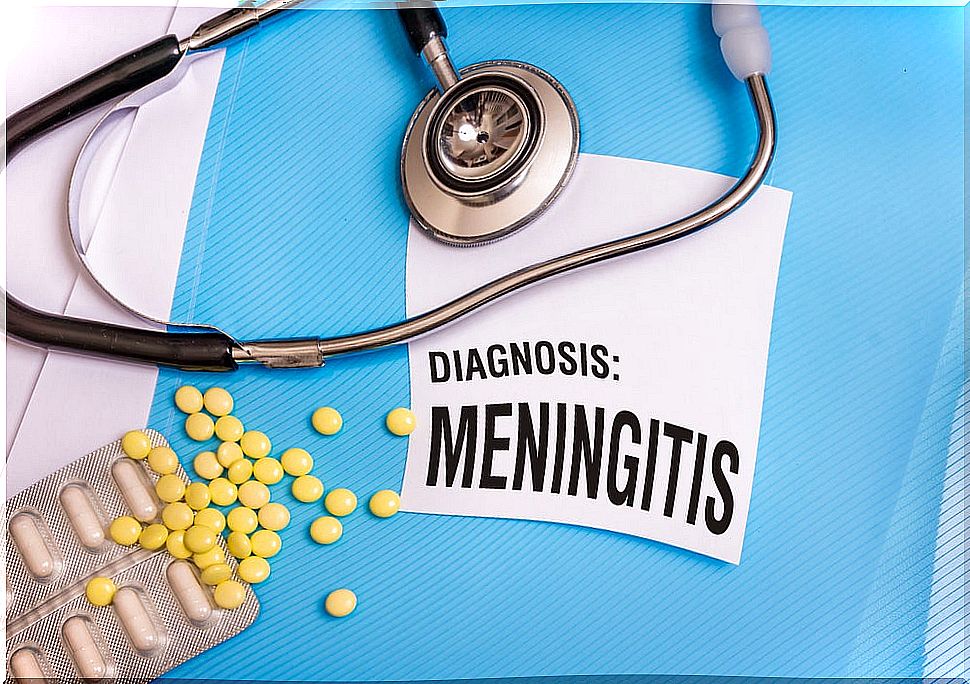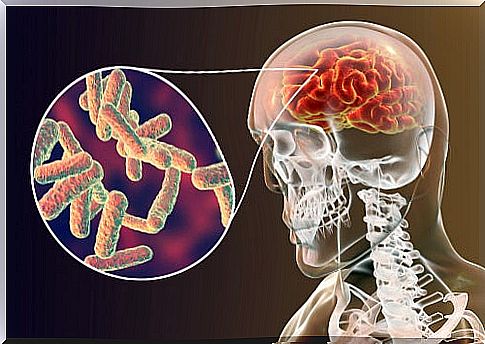How Many Types Of Meningitis Are There?
Meningitis often have symptoms such as fever, headache, tiredness, and a stiff neck. All these signs respond to different types of meningitis, and without the corresponding studies it is impossible to reach an accurate diagnosis.

Meningitis is a pathology that consists of inflammation of the membranes that cover the brain and spinal cord. There are different types of meningitis, although we often hear it named as one.
It is a dangerous situation, since if it is not detected in time it can cause injuries in these organs that put the life of the person who suffers it at risk. In general it means a medical emergency.
This disease can affect anyone, although there are certain risk groups to suffer from it. For example, children under 5 years of age or immunosuppressed people. Unfortunately, it is the leading cause of infectious death in children and adolescents.
The problem is that. even if death does not occur, there is also a high risk of subsequent sequelae. For example, it is relatively common that there are sensory or visual deficits, and even amputation of a limb.
In addition, not all meningitis are caused by the same reason, and that varies the treatment, as well as the evolution and the prognosis. In this article we explain what the main types of meningitis are and why they occur.
Viral meningitis
It is the most common form and is usually less serious than the bacterial one. The truth is that numerous viruses can cause inflammation of the meninges. For example, the chickenpox virus, the herpes virus and the measles virus.
This type of meningitis usually heals on its own. It lasts between 3 and 10 days, and does not need any specific treatment. Supportive measures are applied to monitor the patient. However, what is really important is to distinguish it from the bacterial one.

Bacterial meningitis
When the source of this infection is a bacteria, it is much more dangerous. Fortunately, these cases are less frequent. In addition, in recent years, mortality has fallen significantly, although it is still almost 10%.
However, as we have mentioned before, this type of meningitis is usually accompanied by subsequent sequelae. This is, in part, because bacterial meningitis can lead to septicemia. It is a situation where the body overreacts to infection and various tissues are damaged.
The contagion generally occurs from person to person. However, there are certain risk factors, such as age or the fact of belonging to an environment where there has already been a case – for example, a school class. Other factors are:
- Travel to certain places: the area called the meningitis belt is a region found in Africa, made up of different countries, where the incidence is very high. The same is true in Mecca.
- Work in a laboratory: In investigations where bacteria are manipulated, those involved are at greater risk of developing meningitis.
Most cases of bacterial meningitis are caused by bacteria such as N. meningitidis or S. pneumoniae. It is very important to detect them early and establish treatment immediately, otherwise the risk of complications is very high.
Other types of meningitis
There are other types of meningitis caused by microorganisms other than viruses and bacteria. First of all, meningitis can also be caused by fungi. These cases are not spread from person to person, but are caused by an infection that exists elsewhere in the body.
Fungal meningitis are especially important in immunosuppressed people. For example, in those who need to take corticosteroid medication very extensively, or in patients with HIV in advanced stages.
Meningitis can even be caused by parasites or amoebae. It should also be noted that, in some cases, the cause is not even an infection. Certain pathologies such as cancer, some medications or brain surgeries, can cause it.

How to recognize meningitis?
This pathology manifests itself with symptoms that can be very nonspecific. The normal thing is that it produces fever, fatigue and headache. In addition, it is often accompanied by a stiff neck, sensitivity to light, and irritability. In some cases, rashes appear on the skin.
If meningitis is suspected, it is essential to see a doctor. It is a medical emergency, since, as we have indicated, bacteria can cause serious sequelae. It is necessary to identify the cause and establish the most appropriate treatment quickly.
The type of meningitis will be defined by the treating team based on the symptoms and complementary methods. It is practically impossible to confirm the origin of meningitis without running some studies first. In any case, the initial support measures are taken from the first minute.








